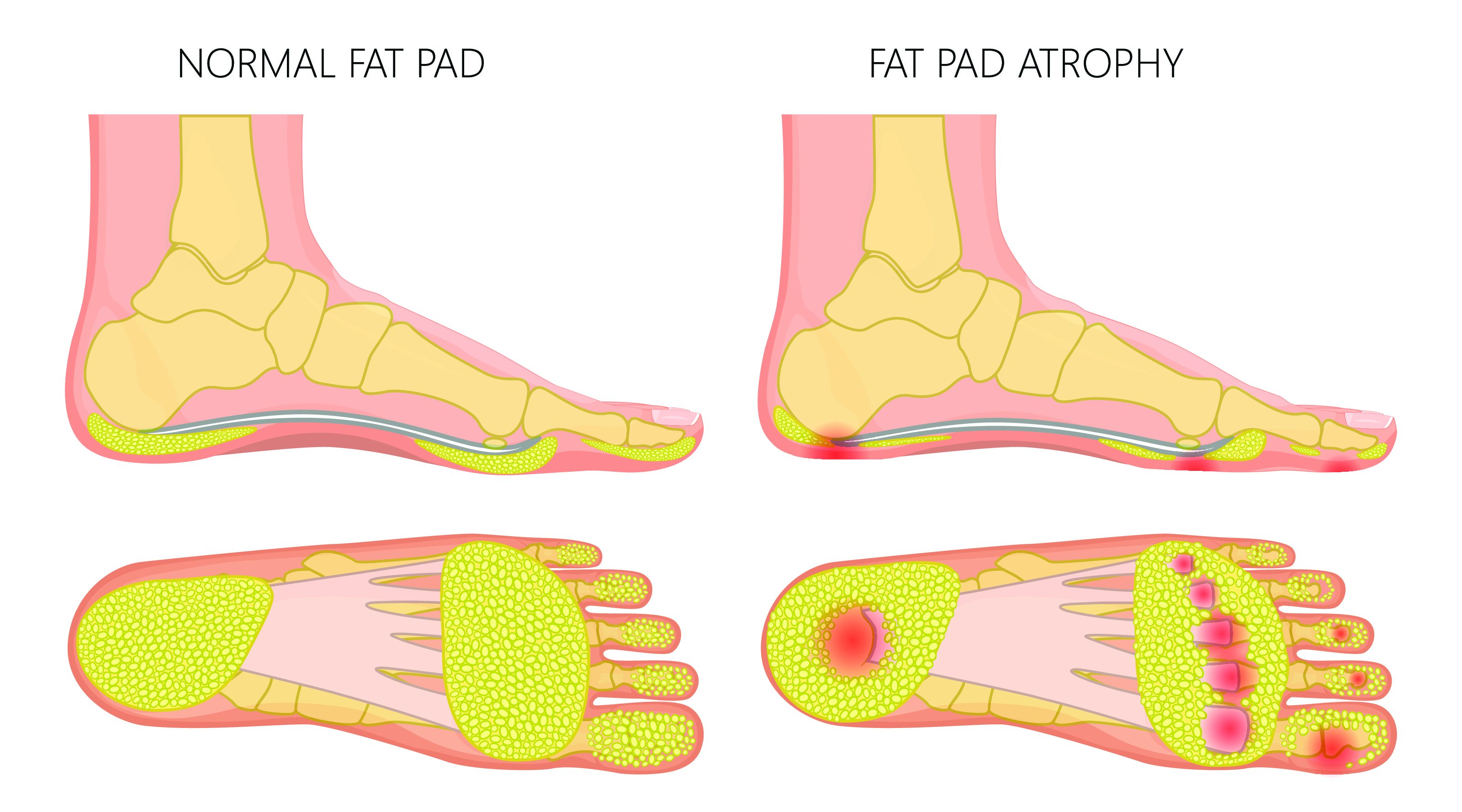What is a heel fat pad atrophy? – Know its symptoms, causes, and treatment
Heel fat pad atrophy is a condition also known as a bruised heel, fat pad herniation or fat pad oedema. Quite simply, it’s where the fatty padding which protects the plantar surface of our heel bone known as the calcaneus becomes overworked and injured. While fat pad injuries are reasonably common, they’re often mistaken for the much more prevalent plantar fasciitis. This mistake can lead to plantar heel pain that lasts longer as the treatment for plantar fasciitis and a heel fat pad injury differ.
Symptoms of heel fat pad atrophy
Symptoms include:
- Pain and tenderness in the areas of atrophy
- Inflammation
- Callous and/or corns
- Ulceration
Causes of heel fat pad atrophy
Age is the most common cause of progressive thinning of the plantar fat pad. Other causes may include:
- Genetic predisposition
- Medical conditions such as diabetic neuropathy
- Surgery/trauma
- Certain medications
- Certain footwear such as high heels can cause increased pressure on the plantar fat pad.
Treatment
As the damage and thinning to the plantar fat pads is largely irreversible, treatments will largely focus on increasing the cushioning and shock absorption under the areas of atrophy. This is often done through a combination of good footwear as well as orthotics. Avoiding activities that exacerbate the symptoms such as walking in bare feet and maintaining a healthy weight can also help minimise the onset of painful symptoms.
Are you suffering from this condition? One of our podiatrist can assist and give the right treatment for your condition. ✅
Schedule an appointment here or you may call us at 44 (0) 207 101 4000. 📞
We hope you have a briheellant day! 👣☀️
-The Chelsea Clinic and Team
Read our article about high ankle sprain here https://www.thechelseaclinic.uk/high-ankle-sprain/




